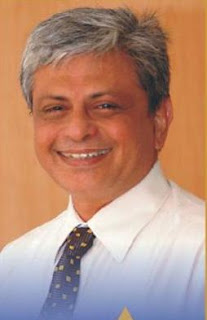Photo credit - https://i.ytimg.com/vi/kVhfJv7kU8M/maxresdefault.jpg
Sharing a story about my inquiry into the science of Lateral Thinking. A journey of thirty years.
I remember Mr. Prabhakar Pandit even after so many years with gratitude and affection.
I was a young officer in a bank then. Mr. Prabhakar Pandit was one of our customers. A middle aged man, he was a bit short tempered, just like any other extremely intelligent people. My colleagues were hesitant to serve him. Somehow Prabhakar took a fancy to me, maybe because I offered my time to listen to him, maybe because I gave him good service. Prabhakar was a multi-faceted person, a thinker and a student for life. He would speak to me on many topics whenever he visited us.
Once Prabhakar gifted me a newspaper article on Edward de Bono, the pioneer of Lateral Thinking. Prabhakar spoke to me about de Bono at length.
Now I had to do something about his gift. After I read through the article, I wrote to Edward thanking him. Those were the snail-mail days and my letter had to travel from Bombay to somewhere in Malta. I never got any reply from Edward (obviously I could not expect one; where will the global leaders find time for all this?). But Prabhakar was happy that I was progressing on his pet topic.
(Something about de Bono for the uninitiated - Edward de Bono is a physician, psychologist, and an author. Some of his famous books are the mechanism of the mind, New think, Six thinking hats etc. Edward proposed a theory that innovation is not the prerogative of a select few; anyone can train him/ her to think laterally. The word lateral thinking was coined by de Bono.)
Years went by. By then I had read quite a few books by de Bono and kept thanking Prabhakar. When the internet arrived on my desktop, the first thing I did was to look for Edward de Bono.
Again I contacted him after fifteen years, this time by a faster mode, email. To my surprise, I received a response followed by a CD about a school programme called CoRT (Cognitive Research Trust). CoRT programme is about nurturing the practice of lateral thinking in schools. This has been rolled out in Venezuela and China (I am told that China has vowed to make every Chinese person a lateral thinker by 2020).
I continued holding Prabhakar’s gift in my heart. During my stay in the UK, I got to learn bits of lateral thinking from Peter, Edward’s brother.
We encouraged our colleagues to implement de Bono’s six hat thinking in our meetings (my colleague Rachna was a master in this); we started using some of the thinking techniques such as PMI (plus, minus and interesting) etc. in our decision-making activities; we started using some of his favourite terminologies such as valufacture (manufacture of value), Po (something between Yes and No) etc. in our conversation; we taught our R&D teams to practice lateral thinking every week as a thinking ritual… etc. etc. One of the stories I wrote a long time ago was titled ‘Valuefacture’.
Will I continue with this journey started by Prabhakar? I surely will.
I doubt if Prabhakar ever thought that the small newspaper cutting he gave a young man would drive him to pursue the though for so long.
Thank you, Prabhakar, wherever you are. I still hold your gift close to my heart, a gift that you gave me some time in 1986.
xxx
Postscript:
Let me now write about Alfred Sisley (1839–1899), one of the important Impressionist painters. Sisley was English but was brought up in France. Sisley is recognized as the most consistent of the Impressionists, never deviating into figure painting.
Sisley's best-known works are Street in Moret and Sand Heaps.
(Impressionism is an art movement. It was started by painters to challenge the then existing style of painting. They redefined painting as an impression of one’s mind rather than what is seen by the eye. Whenever I write about the Impressionist painters, I think of innovation; I want to learn from their conviction to challenge the status quo.)
This painting, titled Fog, Voisins was painted in 1874.
Sisley painted this fog effect with a hint of a fence in the background, foliage on the left, a tree with twisted branches on the right. The protagonist of the painting is the silvery mist which blurs the shapes and the background into a bluish grey tone. A subtle harmony, a silent poem.
Article originally published on Linkedin on 23 July 2017.



No comments:
Post a Comment